|
Wisley's Alpine Log
By Paul Cumbleton
Log 11 22nd May 2008
Auriculas in Pots

Primula auricula 'Cherry Picker'
The extraordinary blossoms of auriculas have been putting on a great show for us over the past six weeks or so. Though now towards the end of their flowering season this seems a good time to do another plant special and focus on these popular plants.
Of course Primula auricula in all its forms has had the devoted following if not obsession of a large number of growers over a long history. As a result, there is a large amount of good, easily available information out there for anyone coming fresh to these plants. So in this log, I will point you in the right directions to this wealth of information, while describing here just how we do things at Wisley with regard to growing them and share pictures of a few of the huge number of forms available. (There are over 700 cultivars listed as available in the current RHS Plantfinder!!)
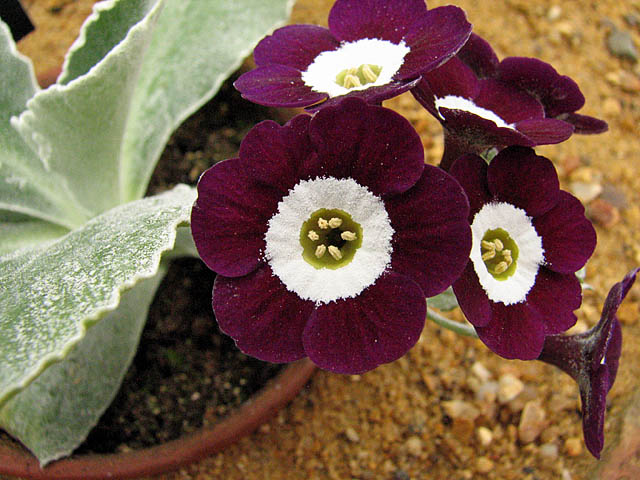
Primula auricula 'Joel
The various types of auriculas have traditionally been divided into groups -there are four groups called "Show", "Alpine", "Double" and finally the "Border" types which are those more usually grown outside in the ground. The "Show" and "Alpine" types have further sub-categories as follows:
Show auriculas - Edged, Self, Striped and Fancy
Alpine auriculas - Fancy, Laced, Gold Centred and Light Centred
The "Show" types - such as 'Joel' above - are those that have, round the centre of the flower a zone that looks "mealy" - this meal is called "paste" and appears rather granular. There may also be meal on the leaves. Here is another example of a "Show" type:
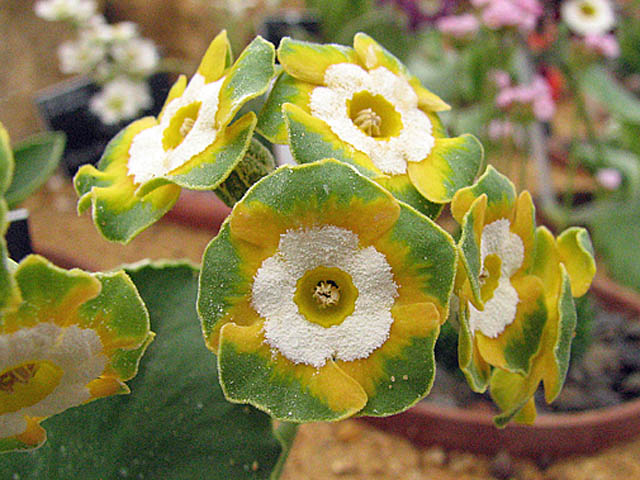
Primula auricula 'Greensleves' - one of the green edged show auriculas
The "Alpine" types do not possess any meal, either on the flower or the leaves, though they still, have a central circle of colour - usually white or yellow - surrounded by petals of a different colour. The petals are usually paler at the edges and shade to dark at the base next to the central circle.
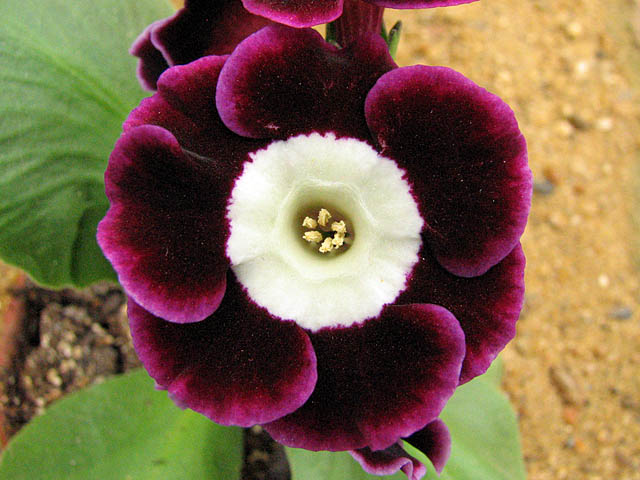
Primula auricula 'Harry Hotspur' - one of the "Alpine" types
The "Double" types are self-explanatory and here is an example:
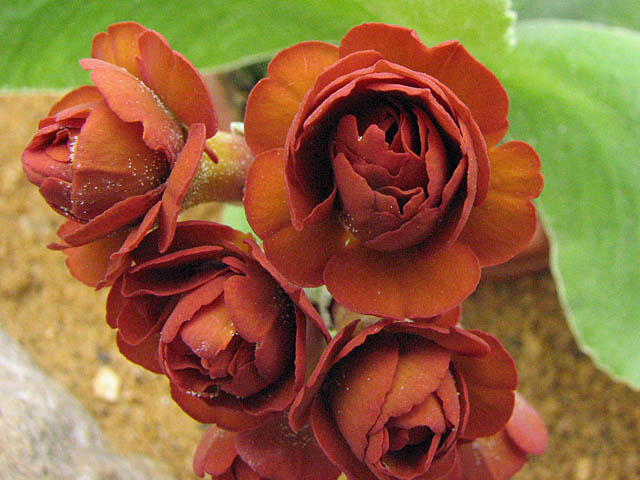
Primula auricula 'Cinnamon'
And just to complete the set, here is an example of a Border auricula:
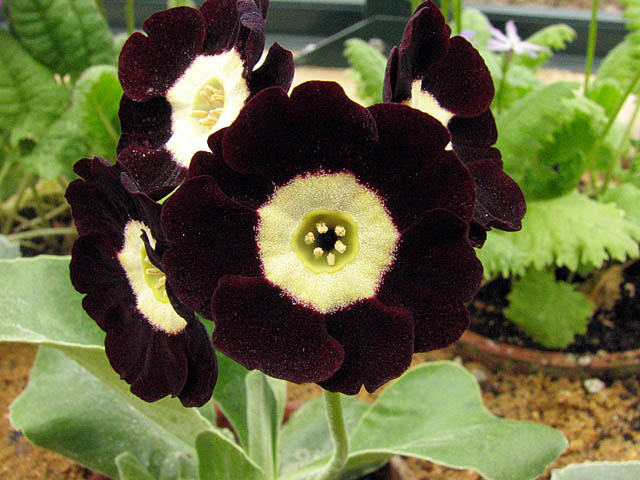
Primula auricula 'Lintz'
So, on to their cultivation in pots:
1. Compost
What medium do we grow them in? Our mix is:
1 part of John Innes compost no. 3
1 part grit
1 part leafmould
1 part vermiculite
We add in just a small amount of extra fertiliser (Vitax Q4 at 1.5 grammes per litre of mix), because the fertiliser content of the John Innes is rather 'diluted' by the other ingredients. We use clay pots as we prefer these for displaying the plants, but most auricula growers use plastic pots these days.
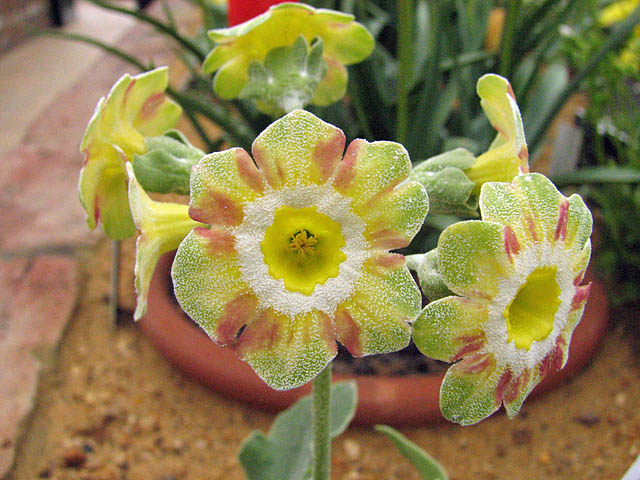
Primula auricula 'Lord Saye and Sele' (a striped Show type)
2. Potting
Although many growers do their potting/re-potting just after flowering has finished, an alternative is late August into early September. We do the latter as it fits in better with our other work. We take off any offsets (and use these as cuttings) to leave just the main plant which we pot into a 9 to 10 cm diameter pot, having removed much of the old root and the old compost. Following tradition, we do not topdress our auriculas with grit.

Primula auricula 'Pot O' Gold' ( a self Show type)
3. Watering
Remember we are growing in clay pots, and the glasshouse we have them in only has normal benches covered in a little gravel, so the pots are standing un-plunged on the bench. Under these conditions, we need to water them on average about twice a week during the spring. Auriculas do not like to be over-watered so if you are using plastic pots you will need a different regime to ours and to take care not to have them too wet. During summer, they are growing less actively and we reduce the watering a bit to keep them on the dry side. Then in the autumn they have another period of more active growth, so we increase the watering a little again then. For the winter, watering is much reduced, but we always keep them just a little bit moist, as they do better if not completely arid at this time.
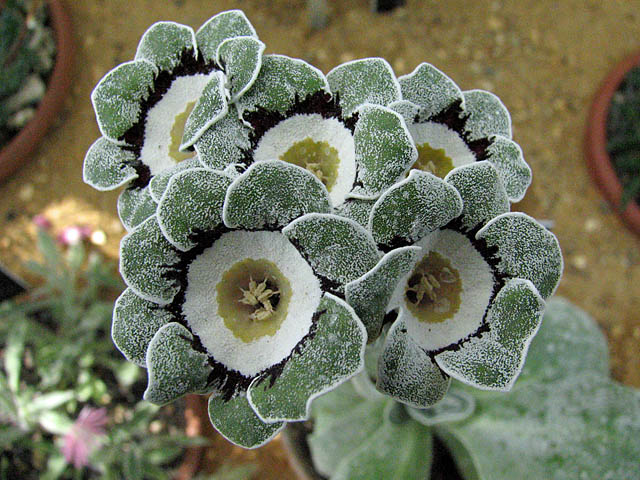
Primula auricula 'Silverway' (an edged Show type)
4. Feeding
Oh dear! This subject raises so many disparate views (no matter what plants you are talking about!). I can only tell you what we do and say this works satisfactorily for us. We liquid feed them at two week intervals from about February to September, using a low nitrogen fertiliser (such as Chempak no. 8) applied at half strength.

Primula auricula 'Roberto' (an edged Show type)
5. Light & other Requirements
During the warmer times of year, auriculas do not like strong sunlight. We apply shading to the glasshouse from late April/early May until September. However, with winter light being so poor they need as much as possible at that time. So we remove all shading from September to April. It is important to give good ventilation at all times. No heating is required in winter as these are very hardy plants.
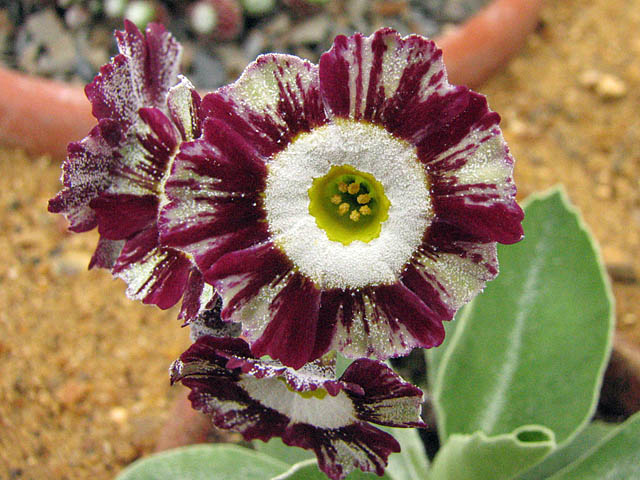
Primula auricula 'Regency Emperor' (a striped Show type)
Earlier I commented that there is a lot of information available on the Internet. Perhaps the best place to start is the website of the Auricula & Primula Society at http://www.auriculaandprimula.org.uk/

Primula auricula 'White Ensign' (an edged Show type)
There are several suppliers of plants, both specialists and more general nurseries that also carry a large range of auriculas. Some of these websites also have a lot of good advice and information about the plants and how to cultivate them. Here are just a few suggestions to get you going:
www.popsplants.co.uk
www.auricula-plants.co.uk
www.woottensplants.co.uk
www.auriculas.co.uk
www.hillviewhardyplants.com
Finally some more pictures to tempt you! :
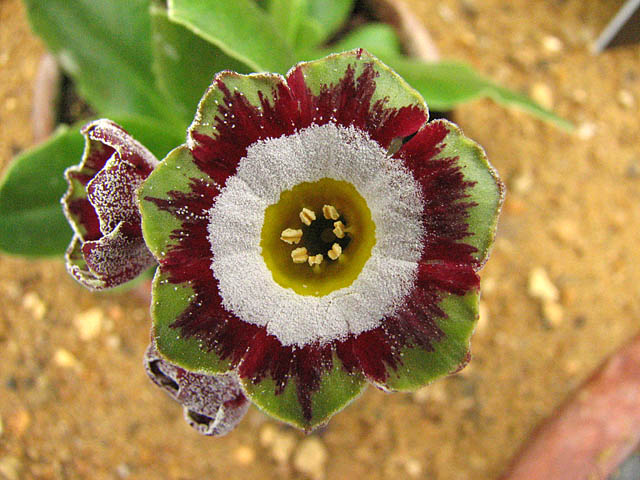
Primula auricula 'Lady Emma Monson' ( a fancy Show type)
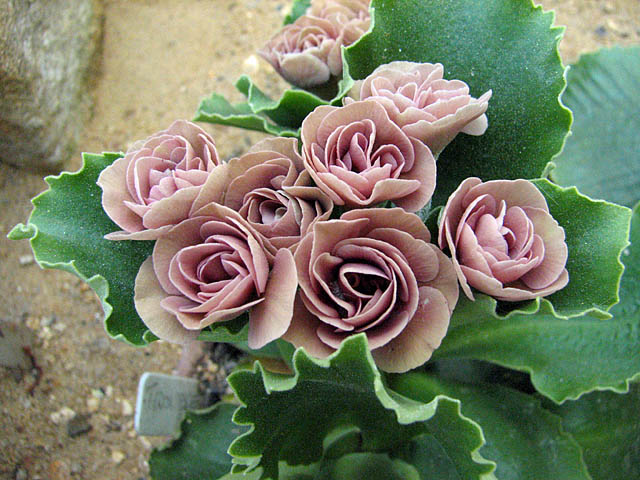
Primula auricula 'Trouble' ( a double type)

Primula auricula 'Sheila' ( a self Show type)

Primula auricula 'Greta' ( a fancy Show type)
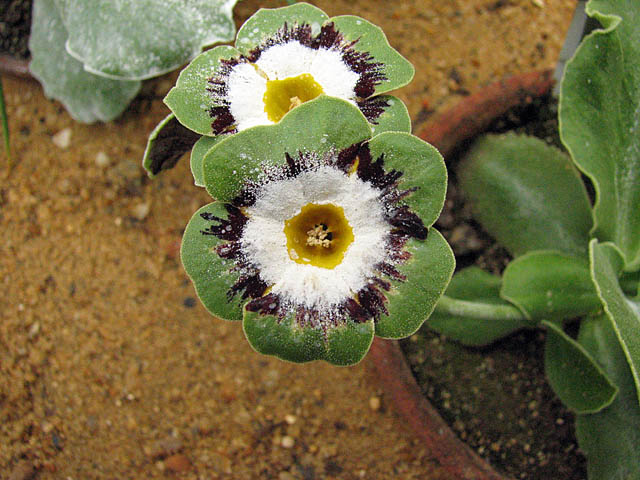
Primula auricula 'Karen Courdrey' (a striped Show type)
^ back to the top ^
|

